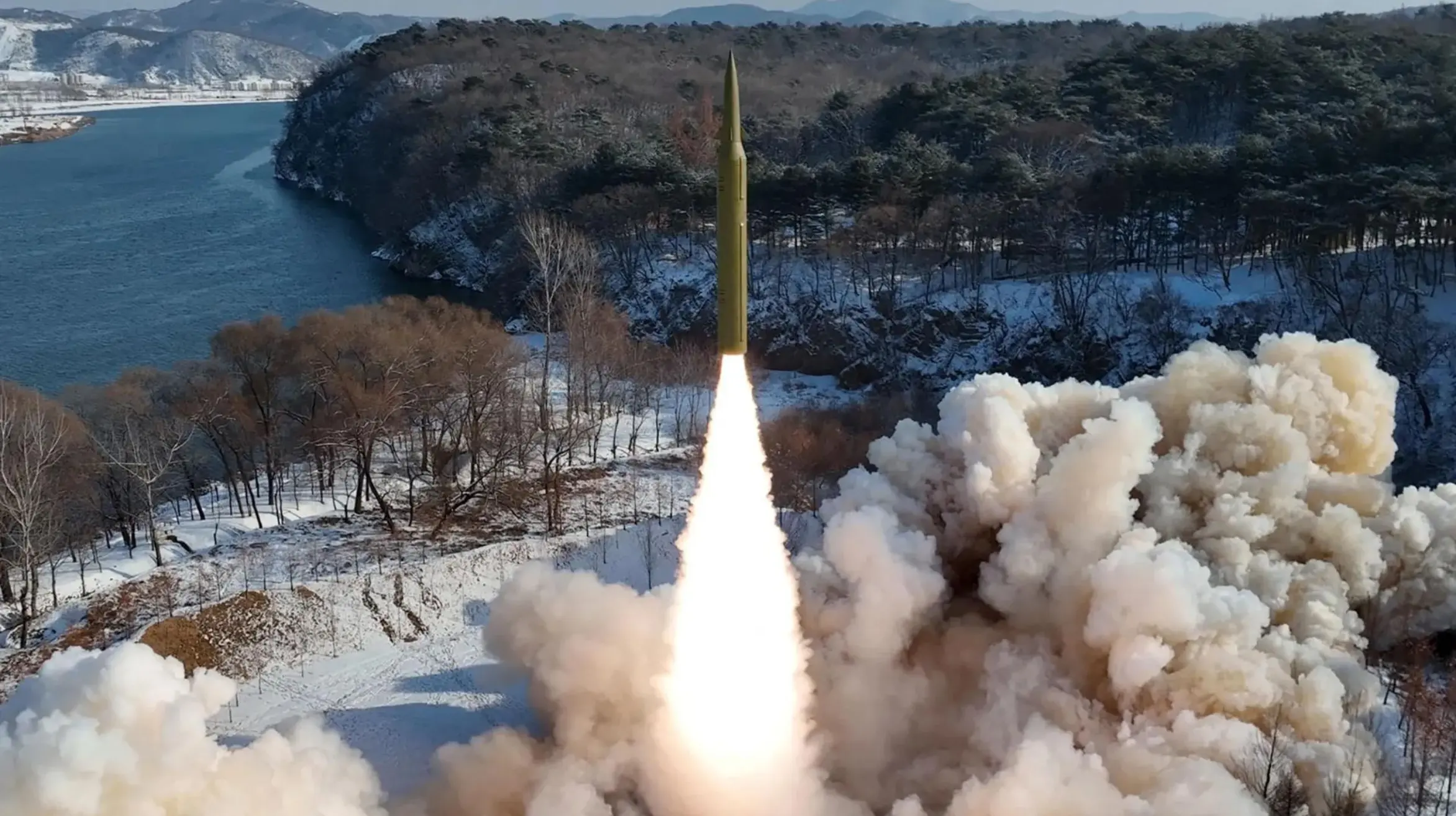North Korea (Transatlantic Today) — North Korea has recently conducted another missile test, further escalating tensions in the region. Japan and South Korea confirmed the launch into the Sea of Japan (East Sea), which is a worrying development for neighbouring countries.
Confirmation of the launch was made by the Japanese Ministry of Defense, which reported the incident via the social media platform X (formerly Twitter). The South Korean General Staff also confirmed the missile launch into the East Sea.
Regional impact of the missile
The missile, believed to be a short-range ballistic missile (SRBM) or multiple launch rocket system (MLRS), is reported to have fallen outside Japan’s Exclusive Economic Zone. This test follows several recent attempts, including a test of a cruise missile last Friday, intensifying concerns over Pyongyang’s military capabilities.
Flight Path and Potential Targets
According to South Korea’s Joint Chiefs of Staff, the launched weapons flew approximately 300 kilometers (185 miles) from the North Korean capital region before crashing into the waters between the Korean Peninsula and Japan. This range indicates the possible targeting of South Korean sites, raising alarm among regional stakeholders.
The timing of the launch coincides with ongoing diplomatic efforts, particularly US Secretary of State Antony Blinken’s upcoming visit to China. The United States and its allies remain vigilant, closely monitoring North Korea’s actions amidst escalating tensions and its declared nuclear status.
Condemnation and Response
According to WeNews, South Korea’s Joint Chiefs of Staff strongly condemned the launches, labeling them as a flagrant provocation endangering peace on the Korean Peninsula. Additionally, Japanese Prime Minister Fumio Kishida ordered officials to gather information and ensure the safety of planes and ships in response to the incident.
North Korea’s Military Strategy
North Korea’s accelerated pace of weapons testing in recent months, coupled with stalled diplomacy with the United States and South Korea, underscores its commitment to expanding military capabilities. Observers suggest that an enhanced arsenal could strengthen North Korea’s negotiating position if diplomatic talks resume.
Advancements in Weaponry
Recent tests, such as a “super-large” cruise missile warhead and an intermediate-range solid-fuel missile with hypersonic warhead potential, demonstrate North Korea’s pursuit of modern armament. While North Korea has nuclear-armed missiles capable of attacking South Korea and Japan, functioning intercontinental ballistic missiles (ICBMs) capable of reaching the US mainland are still underdeveloped.
Regional Response and Preparedness
In response to progressing threats, the United States, South Korea, and Japan have heightened military exercises and discussions on countering North Korean aggression. Amid speculation of a potential satellite launch to mark a significant anniversary, UN Security Council resolutions prohibit North Korea from conducting such activities, considering them a violation of ballistic missile technology bans.
Status of Satellite Launch Preparations
While the South Korean military has detected preparations for a satellite launch, there are no immediate indications of its execution. North Korea claims to have launched its first military spy satellite into orbit last November, with plans for three more launches in 2024, while questions about their capabilities remain.


























